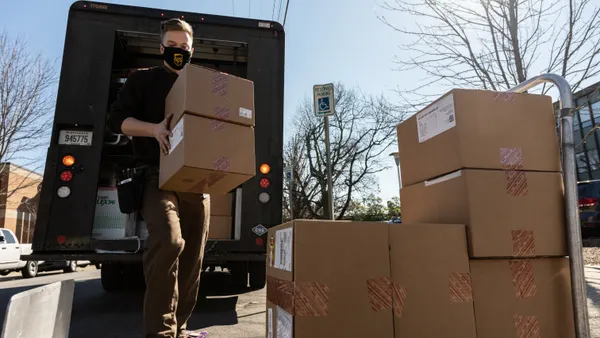Delivering toys to children around the world in one night is indeed a logistical challenge of mythical proportions—and it just got a bit more interesting with the continued rollout of Canada’s eManifest. It is, however, less of a test for Santa than it is for his freight forwarders: the elves.
To make matters more complex, despite all the letters, milk, and cookies, children do not know exactly what (or if!) they are receiving from Santa, so Santa’s gifts are considered unsolicited freight. This is all before unwrapping the details of inspection costs and the timing of submissions! To help Santa’s elves clear the regulatory hurdles, here’s a wish list to guide shipment logistics to and from Canada this holiday season.
Peaceful international trade
Designed to balance security with international trade, eManifest is the third phase of the Canada Border Services Agency’s (CBSA) larger Advance Commercial Information (ACI) program. It requires the electronic transmission of the who, what, when and where of a shipment to the CBSA for validation within a specific timeframe, which varies depending on the mode of transport.
Previous phases included other types of “elves”: ocean carriers (2004), air (2006) and highway/rail (2010). The focus has now turned to freight forwarders who coordinate the shipment of goods (via air, ocean, rail and/or highway) from one place to another using one or multiple carriers.
Good tidings with the electronic house bill
For goods imported into or moving through Canada, on November 7, 2016, it became mandatory that freight forwarders use the electronic house bill (eHBL) to submit supplementary cargo and conveyance data to the CBSA. Other key dates for freight forwarders to mark on the calendar:
- November 7, 2016 to January 10, 2017: Transition period during which penalties for non-compliance will not be issued by the CBSA
- January 11, 2017 to July 11, 2017: Non-compliant freight forwarders will be issued zero-rated (i.e., non-monetary) penalties by the CBSA
- July 12, 2017 and onward: Financial penalties will apply to non-compliance.
Communications decked with Deconsolidation Notices
As part of the eManifest process, deconsolidation notices, or D-Notices, heralds enhanced communication between shipment parties. Carriers, freight forwarders, customs brokers and warehouse operators won’t wonder about shipment milestones if they are a party on the manifest using ‘Completeness Notices’, ‘Arrival Notices’ and ‘Status Notices’.
Shipments that are merry and bright
While the CBSA does not publish an exhaustive list of the exact criteria used to assess shipment risk, packages may be bound for further inspection if, for example, they:
- Contain a 4-digit dangerous goods code
- Are missing mandatory or conditional information
- Include cargo details that are not adequately descriptive
- List a Harmonized System (HS) code(s) for a regulated product
- Include multiple cargo or conveyance amendments
- Are an unusually high or low weight for the cargo listed
No lumps of coal for anyone!
The CBSA will assess penalties based on the type, severity and frequency of an infraction, and may issue penalties to freight forwarders for:
- Providing information that is incomplete, inaccurate or false
- Failing to send the required information within designated, mode-specific timeframes
- Failing to notify the CBSA when data has changed
Prior to introducing eManifest, the CBSA had not defined the freight forwarder as a formal trade participant; however, forwarders represent millions of shipments annually—and are an especially poignant character in the story of holiday delivery this season.
Over the past 12 years, Glenn Palanacki, Product Manager of North American Customs at Descartes has been involved in software development in global supply chain solutions, and has grown to become the Product Manager for an Enterprise Resource Planning (ERP) customs compliance application. Glenn has successfully completed 50+ ERP implementations for 15%-40% cost reductions, and is privileged to function as an integral part of the entire Application Lifecycle Management (ALM) process, from product strategy to implementation and support.













